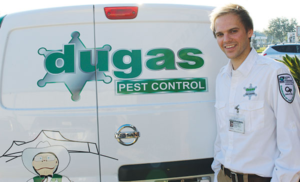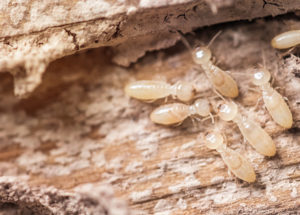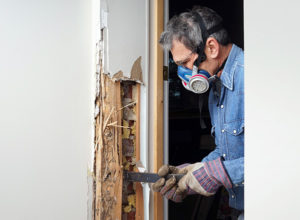The Zika virus got its name from the place where it was discovered in 1947—the Zika forest in Uganda. Recently, health experts have been sounding the alarm regarding the virus after more countries in the Western hemisphere have been exposed to the tropical virus, especially with the outbreak that happened in Brazil last May. Last February of this year, the World Health Organization declared Zika as a “public health emergency of international concern.”
If infected by Zika, a person will experience mild fever, rashes, conjunctivitis, and joint pains. But the more alarming fact is that it can cause a birth defect to an unborn child. If a pregnant woman is infected, Microcephaly can occur; this is a condition that results in a baby with an abnormally small head and stunted brain development. Zika has also been associated with the Guillain-Barre syndrome, a rare condition that causes muscle weakness and paralysis.
Zika Predictions in the US
Most of the Zika cases in the US are travel-related, but health professionals are warning that this coming summer may increase the number of Zika cases in the country, with those living in the Gulf Coast being the most affected. According to the National Center for Atmospheric Research (NCAR), certain US cities will be vulnerable to the Zika virus based on the following factors: air travel, climate, mosquito breeding patterns, and the socioeconomic status of residents.
Since the Zika-carrying mosquitoes are fond of warm weather, the places most likely to be affected are the southern and eastern US, with Miami and Orlando as the likeliest cities to be affected. Another reason for the possible rise of Zika is the expected increase of tourism arrivals from regions that have been previously exposed to the virus. Houston could be affected because of its large number of travelers coming from countries that have already been affected. St. Louis and Denver were also mentioned in NCAR’s study because of their summer conditions that are ideal for these mosquitos.
About the Aedes Aegypti Mosquito
The Aedes Aegypti mosquito is also called the yellow fever mosquito. Aside from Zika, it can also spread dengue fever and chikungunya. While most people will lump all mosquitos as one type of insect, there are actually more than 3,500 species, with the genus Aedes Aegypti mosquito being one of the most dangerous.
The life cycle of an Aedes Aegypti mosquito begins with the hatched eggs, which become a larva in less than 24 hours. The larva will then become a pupa in about four days, and two days after that, it will become a fully grown adult. Once the adult Aedes mosquito has bitten human flesh and drank human blood, it will lay eggs, and the whole cycle begins again.
The Aedes Aegypti mosquito is tiny, dark-colored and its distinguishing marks are the white markings on its legs. It is a tiny, tropical mosquito that lives inside buildings and near people. It moves around very fast, making it harder to catch than other species of its kind.
Its feeding hours are during the day. You won’t notice that it has already bitten you because its bite does not sting and is relatively painless.
These kind of mosquitoes only need one inch of water in order to lay their eggs and survive, which is why an ignored flower vase or an innocuous water container can be a breeding ground for these mosquitoes. They can hide behind unused furniture and dark corners, and can survive without venturing outside the home.
How to Get Rid of the Aedes Aegypti
Since no vaccine exists yet that will treat the Zika virus, you need to exercise caution, especially with the summer months fast approaching. In order to prevent the spread of the Aedes Aegypti mosquito, check the insides of your house and your immediate surroundings for any water-holding containers and empty them of water and other liquids. Use insect repellents and secure the house with window and door screenings to prevent mosquitoes from invading your house.
For your peace of mind and to ensure that your loved ones and your house remain mosquito-free, contact us today!

 Pest control is something that every homeowner will have to deal with eventually. Whether it’s rodents, termites, bedbugs, or hornets, there is an entire world of pests out there that can be challenging and expensive to deal with.
Pest control is something that every homeowner will have to deal with eventually. Whether it’s rodents, termites, bedbugs, or hornets, there is an entire world of pests out there that can be challenging and expensive to deal with. Termites are one of the worst pests out there for homeowners to deal with.
Termites are one of the worst pests out there for homeowners to deal with. Termites are a particularly annoying and dangerous pest to deal with. One thing that is so irritating about them is that unlike many pests which are much larger, they can easily cause structural damage to a wooden building. The worst part is that you might not notice that it’s happening until it’s too late.
Termites are a particularly annoying and dangerous pest to deal with. One thing that is so irritating about them is that unlike many pests which are much larger, they can easily cause structural damage to a wooden building. The worst part is that you might not notice that it’s happening until it’s too late. Having pests crawling all over the place where you live is more than annoying and inconvenient, it’s harmful to the overall health of your family. They bite, bring you diseases, taint the food you have stored, and cause damage to your property.
Having pests crawling all over the place where you live is more than annoying and inconvenient, it’s harmful to the overall health of your family. They bite, bring you diseases, taint the food you have stored, and cause damage to your property.